The pipe club mushroom is one of nature’s most peculiar fungi. This slender club fungus (Macrotyphula juncea) is so thin it looks like a piece of thread standing upright on the forest floor. It is easily overlooked except when it appears in dense, scattered clusters that cover the ground. This species has no culinary value because there’s so little to it. There is no clear information as to whether it’s toxic or not.
- Scientific Name: Macrotyphula juncea
- Common Names: Pipe Club, Fairy Club, Slender Club
- Habitat: On the ground
- Edibility: Inedible
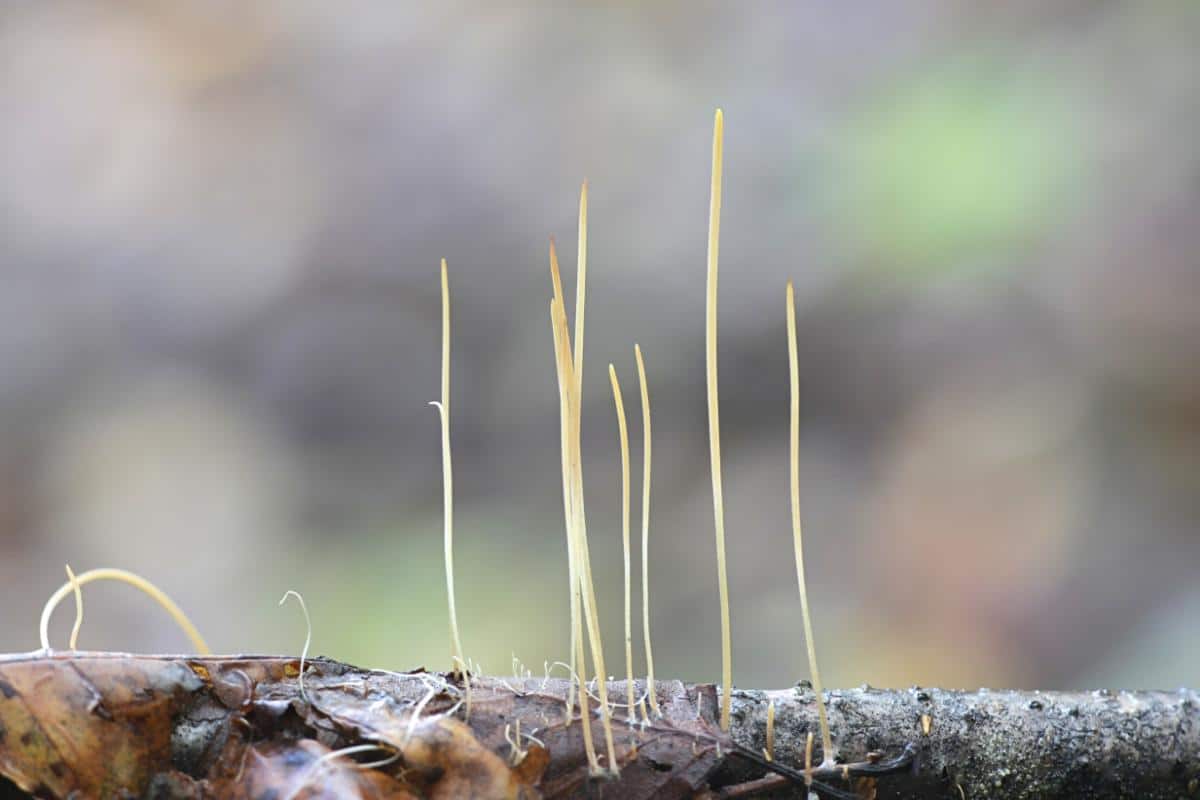
Jump to:
All About The Pipe Club Mushroom
The pipe club mushroom is a slender fungus that grows between 1.2 to 3.1 inches tall. The mushroom’s cylindrical shape has a smooth surface that ranges from cream-buff to pale ochraceous-brown coloring.
Key identifying features:
- A super-skinny club-shaped body that’s usually unbranched
- Smooth, whitish to pale yellowish surface
- Copious rhizomorphs extending from the base into the substrate
- Rounded or slightly pointed tips at maturity
The pipe club mushroom falls under the Typhulaceae family. It shares characteristics with other club fungi, though its classification has changed throughout history. Scientists accepted the current scientific name in 1974, but you might still see older synonyms like Clavaria juncea, Typhula juncea, and Clavariadelphus junceus in some guides.
The name “Typhula” comes from Latin and means “slightly smokey.” The name “juncea” also comes from Latin and means “rush-like.” Rushes are evergreen plants that look like grass. Their blades are tall and skinny, just like the pipe club mushroom.
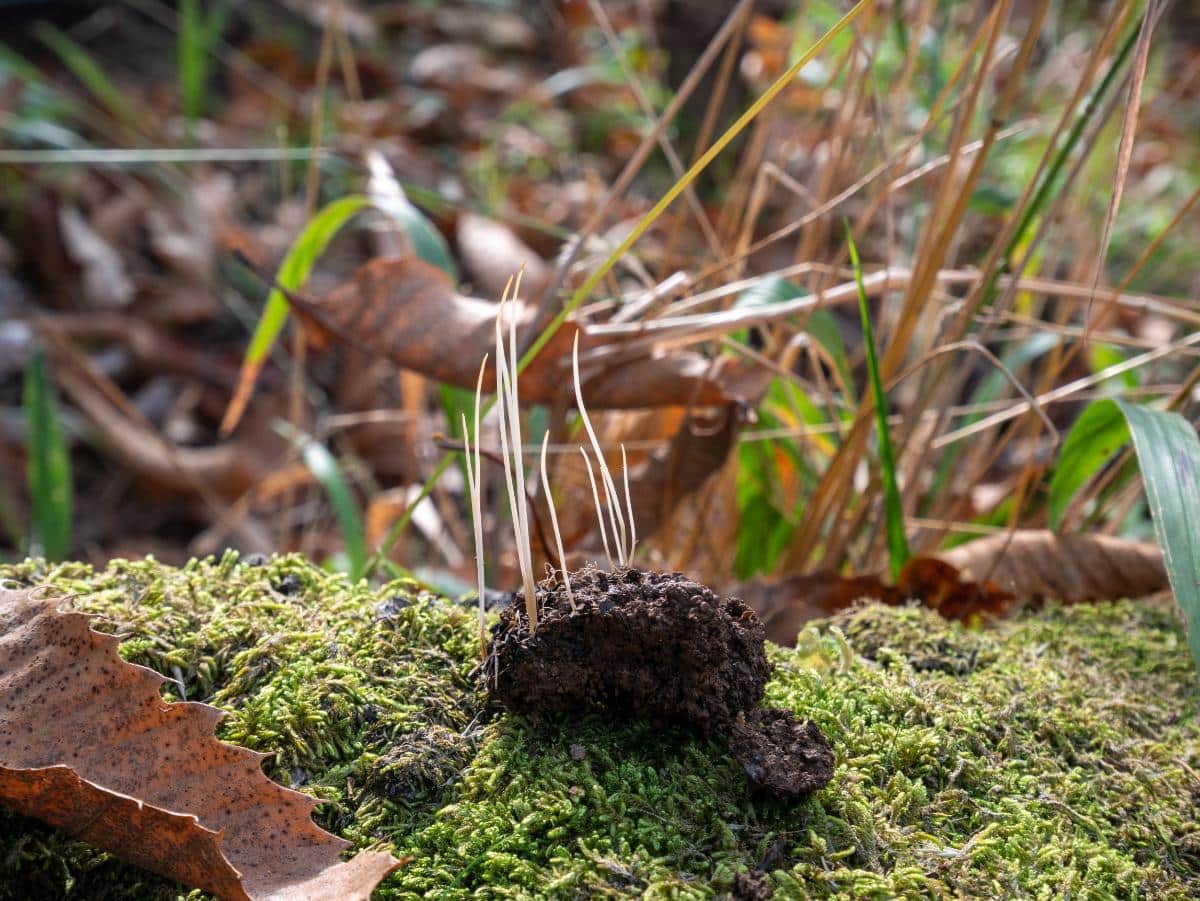
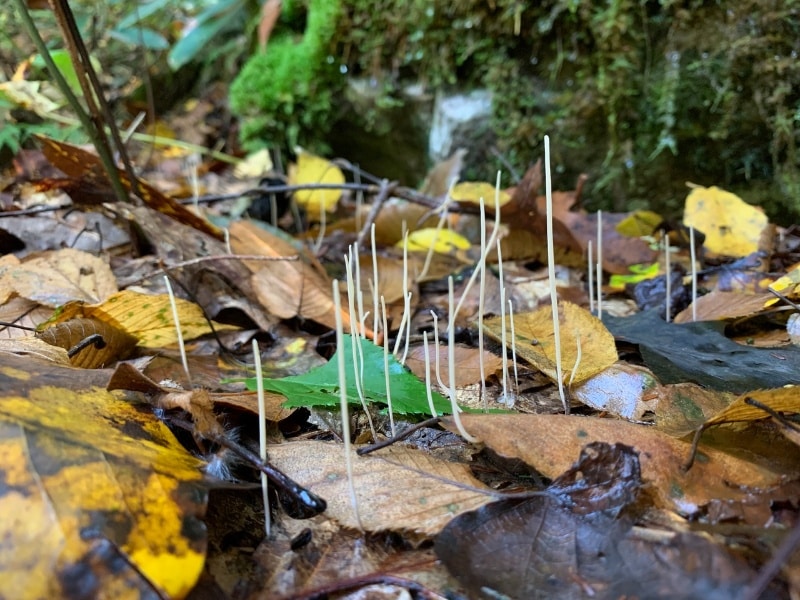
Pipe Club Mushroom Identification
Season
These mushrooms appear from summer through fall. In warmer climates, they also grow in winter.
Habitat
Pipe club mushrooms appear on dead leaves or leaf stalks of hardwood and conifer trees. They show a strong preference for beech and ash debris, which makes these spots ideal for finding them. They usually grow in shaded areas. These fungi tend to grow in scattered clusters, which makes spotting them easier once you find your first specimen. The pale strands might blend into the forest floor unless you look specifically for them. Take time to scan the ground carefully.
They grow in decomposing forest litter and favor these substrates:
- Fallen branchlets of redwood (Sequoia sempervirens)
- Leaves of tanbark oak
- Live oak debris (Quercus agrifolia)
They always grow from leaf debris or very small sticks; they do not grow on trees or logs. These fungi are widely distributed in North America.
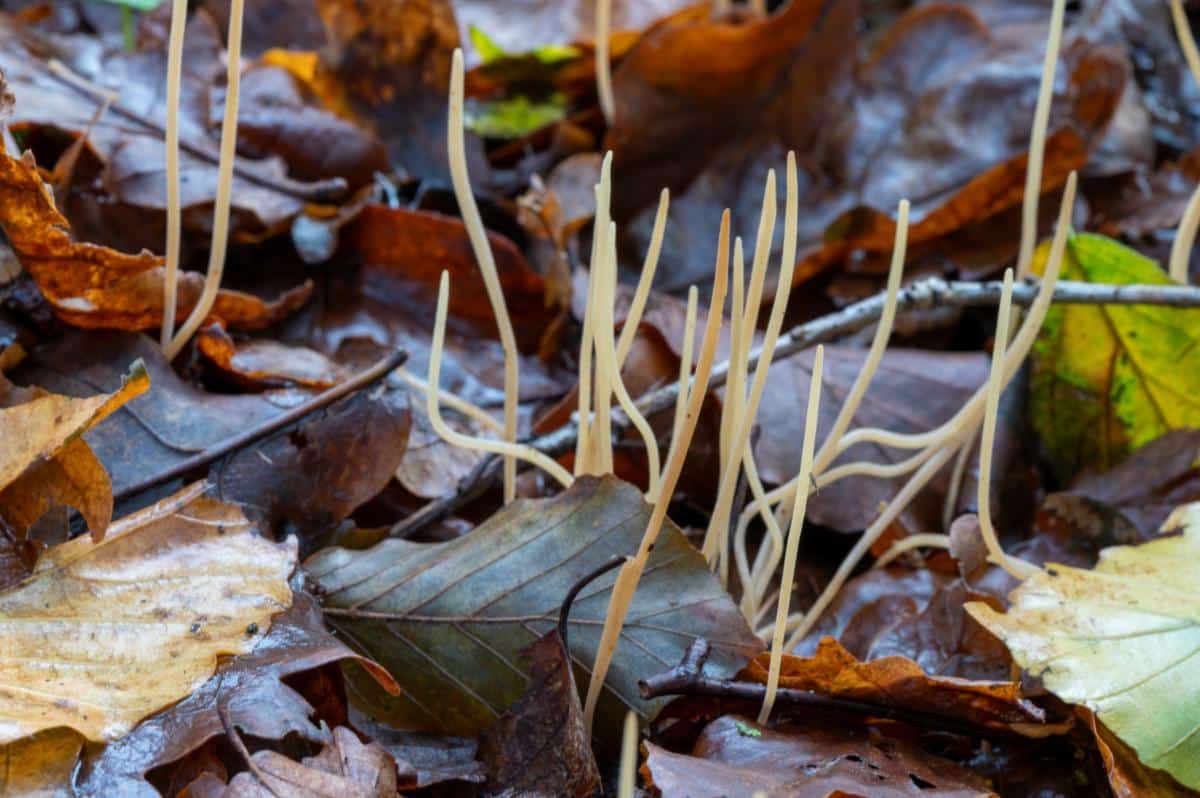
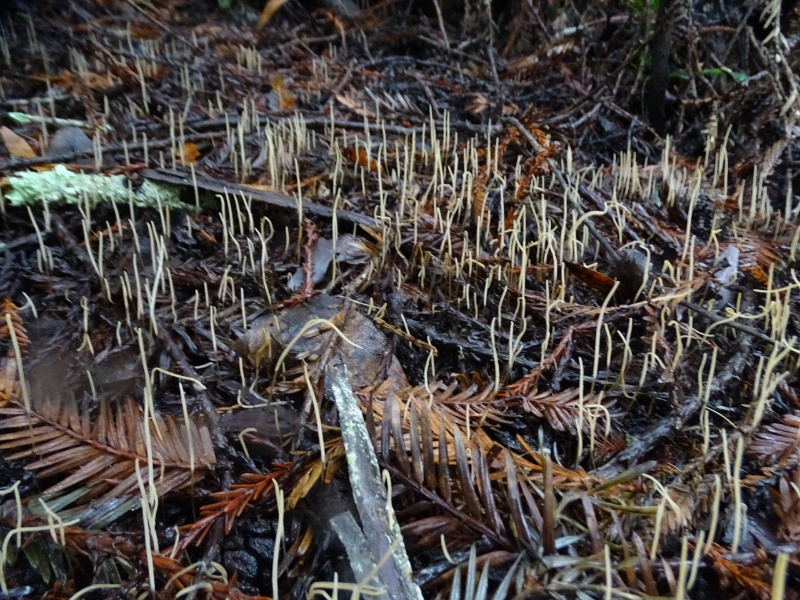
Identification
The pipe club mushroom is a slender, yellowish to light ochre club rising from the forest floor. These delicate fungi grow between 1.2 to 4 inches tall and measure about 0.02 to 0.05 inches in diameter. The thin bodies do not branch like coral fungi – they are cylindrical, upright, and even.
The clubs may be straight or gently curved. They have pointed tips at first and become rounded as they mature. The mushrooms range in color from yellowish to light ochre or orange-brown colors. The surface is smooth without decorations. There are copious thread-like structures called rhizomorphs at the base of the stem.
The pipe club mushroom has a sour or unpleasant smell. Its flesh is white and does not change color when cut or bruised.
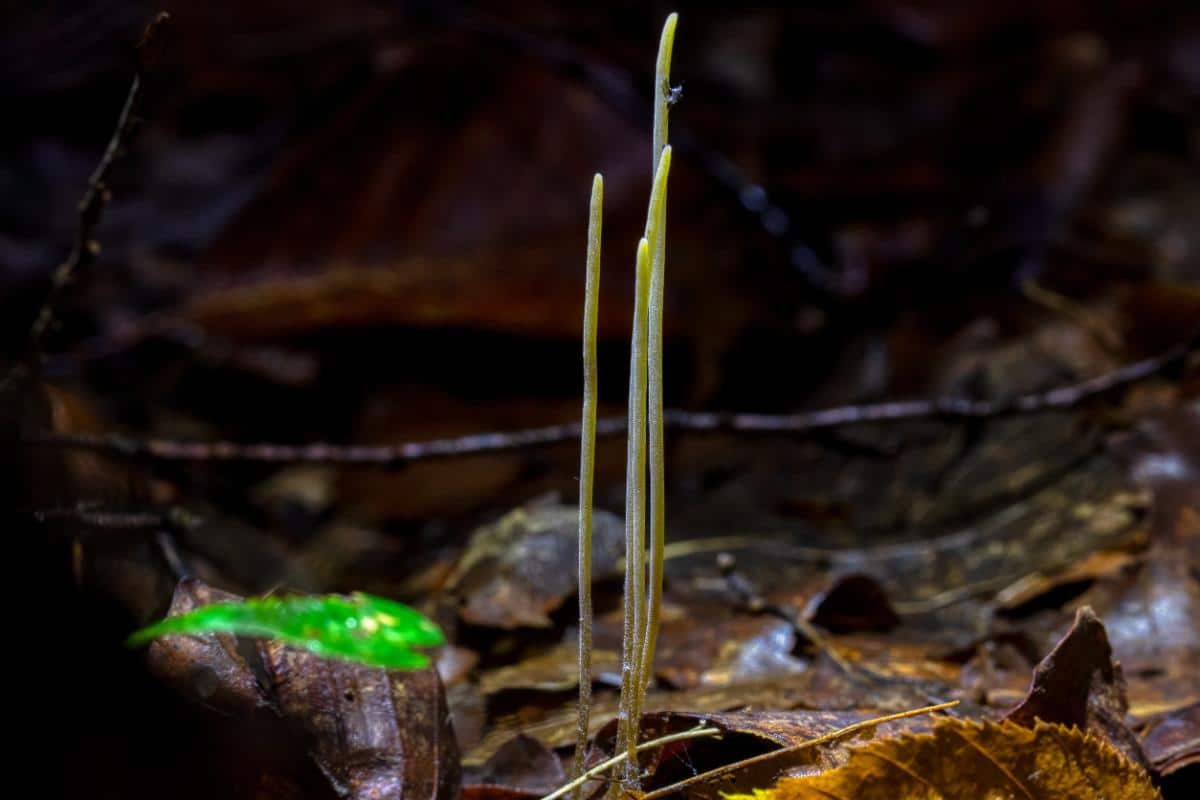
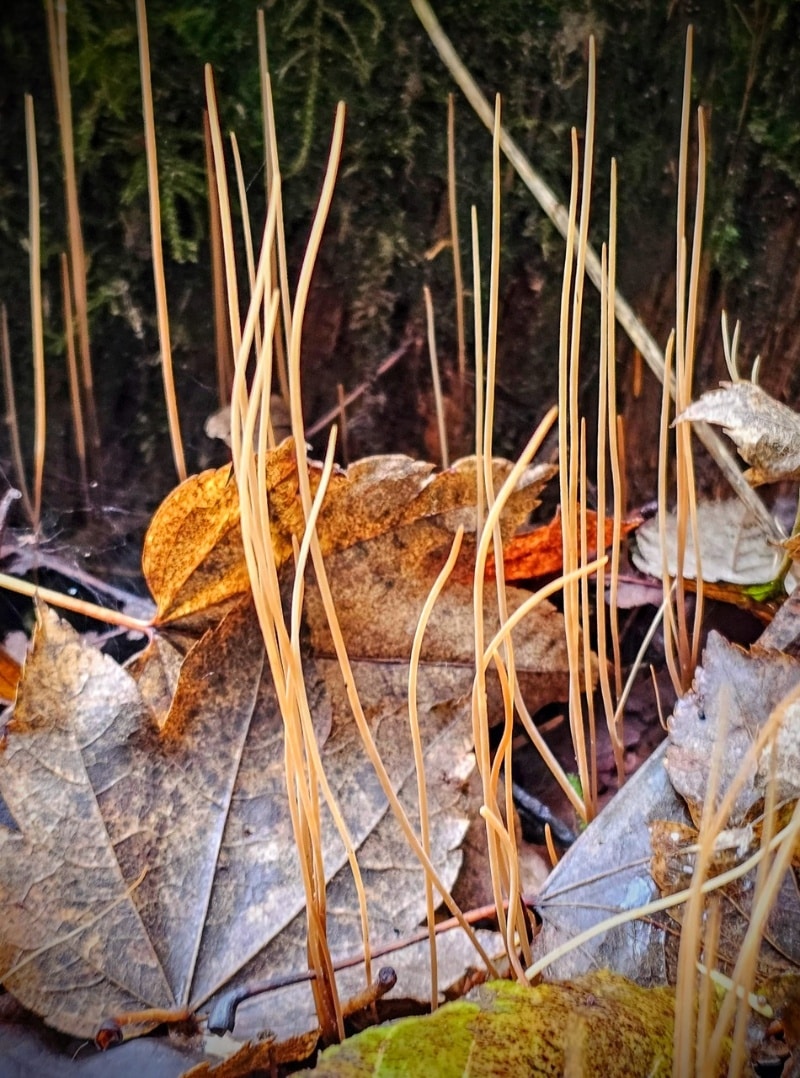
Macrotyphula juncea by Carmel Cameron on Mushroom Appreciation
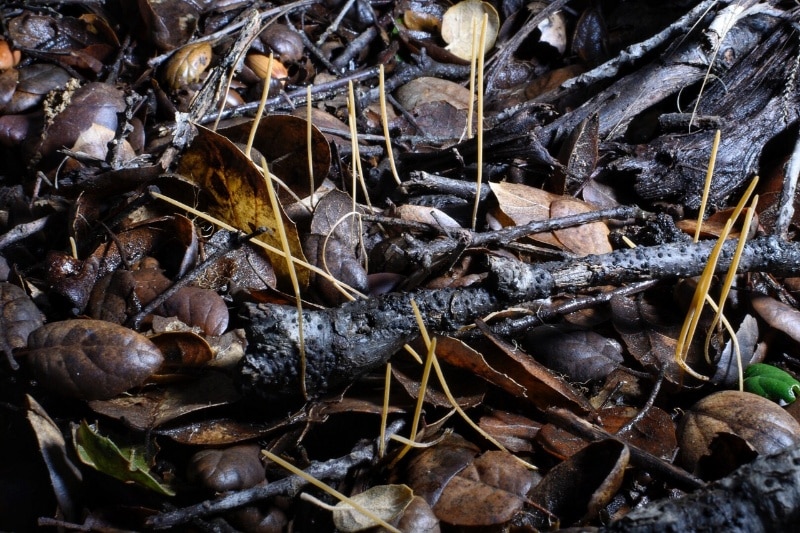
Pipe Club Mushrooms Lookalikes
Long Club Fungus (Typhula phacorrhiza)
Typhula phacorrhiza and Macrotyphula juncea are both club-like fungi, but they have several distinguishing characteristics that set them apart. Typhula phacorrhiza is a smaller species compared to Macrotyphula juncea. It typically grows to a height of 1 to 3 inches, with thin, thread-like fruiting bodies that are pale yellow to white in color.
One of the most distinctive features of T. phacorrhiza is the presence of a small, dark brown to black sclerotium at the base of the stem. This sclerotium is a compact mass of hardened fungal mycelium that acts as a survival structure and allows the fungus to persist through unfavorable conditions. Always did up the base of the mushroom to look for this.
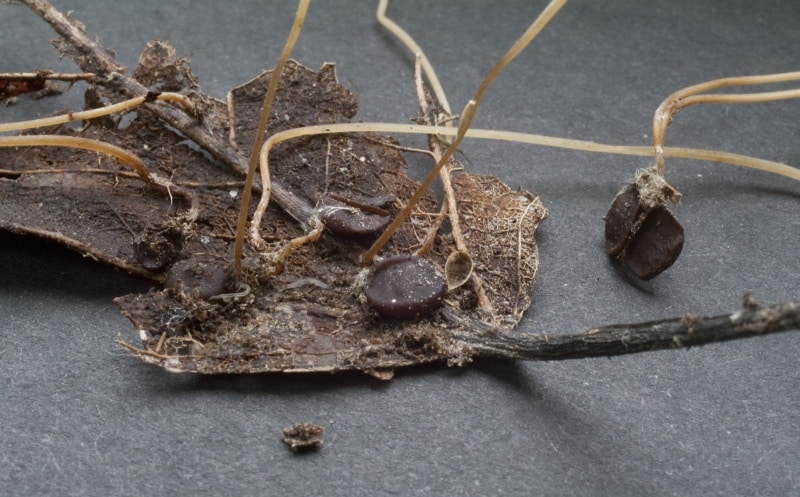
Candlesnuff Fungus (Xylaria hypoxylon)
Despite some superficial similarities, Xylaria hypoxylon and Macrotyphula juncea have several key differences in appearance.
Xylaria hypoxylon typically grows in clusters on dead or decaying wood, particularly on hardwood trees. The fruiting bodies start as thin, upright, dark-colored structures that branch near the top, resembling small antlers or candle wicks. As they mature, the tips of these branches develop a white, powdery coating, which contains the fungus’s spores.
In contrast, Macrotyphula juncea is typically found growing on fallen leaves and forest debris. M. juncea bodies are extremely thin, thread-like, and unbranched. They are pale in color, ranging from whitish to pale yellow or light brown. They lack the dark coloration and white powdery coating characteristic of X. hypoxylon.
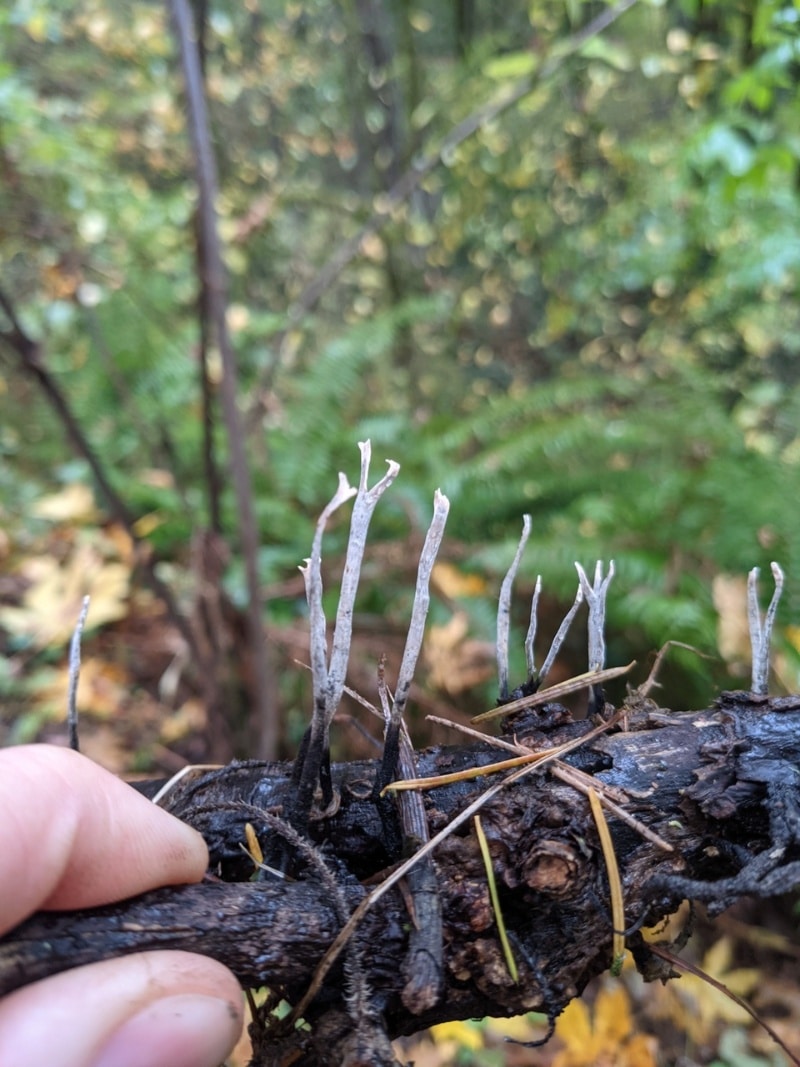
Clavaria fuscata
Clavaria fuscata and Macrotyphula juncea are both slender, club-like fungi, but they have several characteristics that set them apart. The most striking difference between these two species is their odor. Clavaria fuscata is known for its strong garlic scent, which becomes particularly noticeable when the flesh is crushed. This distinctive odor is so potent that it can fill a room. In contrast, Macrotyphula juncea has a sour and unpleasant odor.
Clavaria fuscata is typically found in hardwood forests, growing on the forest floor. It’s considered rare and is primarily distributed in eastern North America. Macrotyphula juncea, however, is more commonly found in damp woodlands, specifically on dead leaves or leaf stalks.
Curious about other Club Mushrooms -> Club Mushrooms of North America: Identification and Lookalikes
Common Questions About Pipe Club Mushrooms
What are the key identifying features of the Pipe Club Mushroom?
The Pipe Club Mushroom (Macrotyphula juncea) is a slender, club-shaped fungus that does not branch. It grows to a height of about 1.2 to 3.1 inches and is only 0.02 to 0.06 inches thick. The surface is smooth and can be whitish to pale yellowish in color. At maturity, the tips are rounded or slightly pointed, and many rhizomorphs extend from the base of the stem.
Where can I find Pipe Club Mushrooms?
Pipe Club Mushrooms thrive in dark, moist areas of both hardwood and conifer forests. They’re commonly found on decomposing forest litter, particularly on fallen branchlets of redwood, leaves of tanbark oak, and live oak debris. They’re fairly common across North America, especially in coastal regions with redwood forests and mixed woodlands.
Are Pipe Club Mushrooms edible?
Pipe clubs are not foraged for eating because they’re not worth it. Their bodies are so small they offer no culinary value.

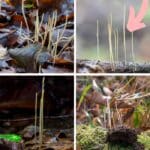
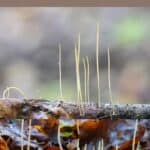






Leave a Reply